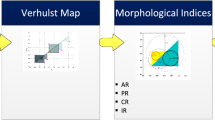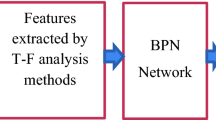Abstract
Heart rate variability (HRV) analysis has become a widely used tool for monitoring pathological and psychological states in medical applications. In a typical classification problem, information fusion is a process whereby the effective combination of the data can achieve a more accurate system. The purpose of this article was to provide an accurate algorithm for classifying HRV signals in various psychological states. Therefore, a novel feature level fusion approach was proposed. First, using the theory of information, two similarity indicators of the signal were extracted, including correntropy and Cauchy-Schwarz divergence. Applying probabilistic neural network (PNN) and k-nearest neighbor (kNN), the performance of each index in the classification of meditators and non-meditators HRV signals was appraised. Then, three fusion rules, including division, product, and weighted sum rules were used to combine the information of both similarity measures. For the first time, we propose an algorithm to define the weights of each feature based on the statistical p-values. The performance of HRV classification using combined features was compared with the non-combined features. Totally, the accuracy of 100% was obtained for discriminating all states. The results showed the strong ability and proficiency of division and weighted sum rules in the improvement of the classifier accuracies.










Similar content being viewed by others
References
Karimi Moridani, M., Setarehdan, S. K., Motie Nasrabadi, A., and Hajinasrollah, E., Analysis of heart rate variability as a predictor of mortality in cardiovascular patients of intensive care unit. Biocybern. Biomed. Eng. 35:217–226, 2015.
MM Hassan, S., Huda, J. Y., Jelinek, H. F., and Almogren, A., Multistage fusion approaches based on a generative model and multivariate exponentially weighted moving average for diagnosis of cardiovascular autonomic nerve dysfunction. Inform. Fusion 41:105–118, 2018.
Bevilacqua, F., Engstrom, H., and Backlund, P., Changes in heart rate and facial actions during a gaming session with provoked boredom and stress. Entertain. Comput. 24:10–20, 2018.
Huikuri, H. V., Makikallio, T., Airaksinen, K., Mitrani, R., Castellanos, A., and Myerburg, R. J., Measurement of heart rate variability: A clinical tool or a research toy? J. Am. Coll. Cardiol. 34:1878–1883, 1999.
Acharya, U. R., Kannathal, N., OngWai, S., Luk Yi, P., and TjiLeng, C., Heart rate analysis in normal subjects of various age groups. Biomed. Eng. Online 3:24–28, 2004.
Santamaria, I., Pokharel, P. P., and Principe, J. C., Generalized correlation function: Definition, properties and application to blind equalization. IEEE Trans. Signal Process. 54:2187–2197, 2006.
Hasanbelliu, E., Giraldo, L. S., and Principe, J. C., Information theoretic shape matching. IEEE Trans. Pattern Anal. Mach. Intell. 36:2436–2451, 2014.
Goshvarpour, A., Goshvarpour, A., and Rahati, S., Analysis of lagged Poincare plots in heart rate signals during meditation. Digit. Signal Process. 21:208–214, 2011.
Goshvarpour, A., and Goshvarpour, A., Poincare indices for analyzing meditative heart rate signals. Biomed. J. 38:229–234, 2015.
Alvarez-Ramirez, J., and E Rodriguez, J. C., Echeverria fractal scaling behavior of heart rate variability in response to meditation techniques. Chaos Solitons Fractals. 99:57–62, 2017.
Song, R., Bian, C., and Ma, Q. D. Y., Multifractal analysis of heartbeat dynamics during meditation training. Physica A. 392:1858–1862, 2013.
J Li, J. H., Zhang, Y., and Zhang, X., Dynamical complexity changes during two forms of meditation. Physica. A. 390:2381–2387, 2011.
Goshvarpour, A., and Goshvarpour, A., Recurrence plots of heart rate signals during meditation. I. J. Image Graph. Signal Process. 2:44–50, 2012.
Peng, C.-K., Mietus, J. E., Liu, Y., Khalsa, G., Douglas, P. S., Benson, H., and Goldberger, A. L., Exaggerated heart rate oscillations during two meditation techniques. Int. J. Cardiol. 70:101–107, 1999.
Goshvarpour, A., and Goshvarpour, A., Comparison of higher order spectra in heart rate signals during two techniques of meditation: Chi and Kundalini meditation. Cogn. Neurodyn. 7:39–46, 2013.
Goshvarpour, A., and Goshvarpour, A., Classification of heart rate signals during meditation using Lyapunov exponents and entropy. I. J. Intell. Syst. Appl. 2:35–41, 2012.
Goshvarpour, A., and Goshvarpour, A., Chaotic behavior of heart rate signals during Chi and Kundalini meditation. I. J. Image Graph. Signal Process. 2:23–29, 2012.
Gao, J., J Fan, B. W. W., Zhang, Z., Chang, C., Hung, Y. S., Fung, P. C., and Sik, H. H., Entrainment of chaotic activities in brain and heart during MBSR mindfulness training. Neurosci. Lett. 616:218–223, 2016.
Goldberger, A. L., Amaral, L. A. N., Glass, L., Hausdorff, J. M., Ivanov, P. C., Mark, R. G., Mietus, J. E., Moody, G. B., Peng, C.-K., and Stanley, H. E., PhysioBank, PhysioToolkit, and PhysioNet: Components of a new research resource for complex physiologic signals. Circulation 101(23):e215–e220, 2000.
Liu, W., Pokharel, P. P., and Principe, J. C., Correntropy: A localized similarity measure. In: The IEEE International Joint Conference on Neural Network Proceedings, pp 4919–4924, 2006.
Garde, A., Sornmo, L., and Jané, R., Correntropy-based analysis of respiratory patterns in patients with chronic heart failure. In: Proceedings of the 31st annual international conference of the IEEE engineering in medicine and biology society: Engineering the future of Biomedicine, pp 4687–4690, 2009.
Pokharel, P. P., Liu, W., and Principe, J. C., A low complexity robust detector in impulsive noise. Signal Process. 89:1902–1909, 2009.
Liu, W., and PP Pokharel, C. P. J., Correntropy: Properties and applications in non-Gaussian signal processing. IEEE Trans. Signal Process. 55(11):5286–5298, 2007.
Melia, U., Guaita, M., Vallverdú, M., Montserrat, J. M., Vilaseca, I., Salamero, M., Gaig, C., Caminal, P., and Santamaria, J., Correntropy measures to detect daytime sleepiness from EEG signals. Physiol. Meas. 35(10):2067–2083, 2014.
Guaita, M., Melia, U., Vallverdú, M., Caminal, P., Vilaseca, I., Montserrat, J. M., Gaig, C., Salamero, M., and Santamaria, J., Regularity of cardiac rhythm as a marker of sleepiness in sleep disordered breathing. PLoS One 10(4):e0122645, 2015.
Kullback, S., Information theory and statistics. New York: Wiley, 1959.
Czarnecki, W. M., and Tabor, J., Multithreshold entropy linear classifier: Theory and applications. Expert. Syst. Appl. 42:5591–5606, 2015.
Nguyen, C., Lovering, C., and Neamtu, R., Ranked time series matching by interleaving similarity distances. In: IEEE International Conference on Big Data (Big Data), 11–14 Dec. 2017, Boston, MA, USA, 2017.
Czarnecki, W. M., and Tabor, J., Extreme entropy machines: Robust information theoretic classification. Pattern. Anal. Appl 2(2):383–400, 2017.
Seth, S., and Príncipe, J. C., On speeding up computation in information theoretic learning. In: International Joint Conference on Neural Networks (IJCNN 2009), 14–19 June 2009, Atlanta, GA, USA, pp 2883–2887, 2009.
Ghongade, R., Deshmukh, M., and Joshi, D., Arrhythmia classification using morphological features and probabilistic neural networks. Computational Intelligence on Power, Energy and Controls with their impact on Humanity (CIPECH), 80–84, 2014.
Han, J., Pei, J., and Kamber, M., Data mining: Concepts and techniques. 3rd edition, Elsevier, 2011.
Larose, D. T., Discovering knowledge in data: An introduction to data mining. John Wiley & Sons, 2014.
Goshvarpour, A., Abbasi, A., and Goshvarpour, A., Fusion of heart rate variability and pulse rate variability for emotion recognition using lagged Poincare plots. Australas. Phys. Eng. Sci. Med. 40:617–629, 2017.
Goshvarpour, A., Abbasi, A., Goshvarpour, A., Daneshvar, S., A novel signal-based fusion approach for accurate music emotion recognition. Biomedical Engineering Applications, Basis and Communications, 28: 1650040 [10 pages], 06, 2016.
Phongsuphap, S., and Pongsupap, Y., Analysis of heart rate variability during meditation by a pattern recognition method. Comput. Cardiol. 38:197–200, 2011.
Funding
“This research did not receive any specific grant from funding agencies in the public, commercial, or not-for-profit sectors”.
Author information
Authors and Affiliations
Corresponding author
Ethics declarations
Conflict of interest
The authors declare that they have no conflict of interest.
Additional information
This article is part of the Topical Collection on Image & Signal Processing
Rights and permissions
About this article
Cite this article
Goshvarpour, A., Goshvarpour, A. A Novel Feature Level Fusion for Heart Rate Variability Classification Using Correntropy and Cauchy-Schwarz Divergence. J Med Syst 42, 109 (2018). https://doi.org/10.1007/s10916-018-0961-2
Received:
Accepted:
Published:
DOI: https://doi.org/10.1007/s10916-018-0961-2




